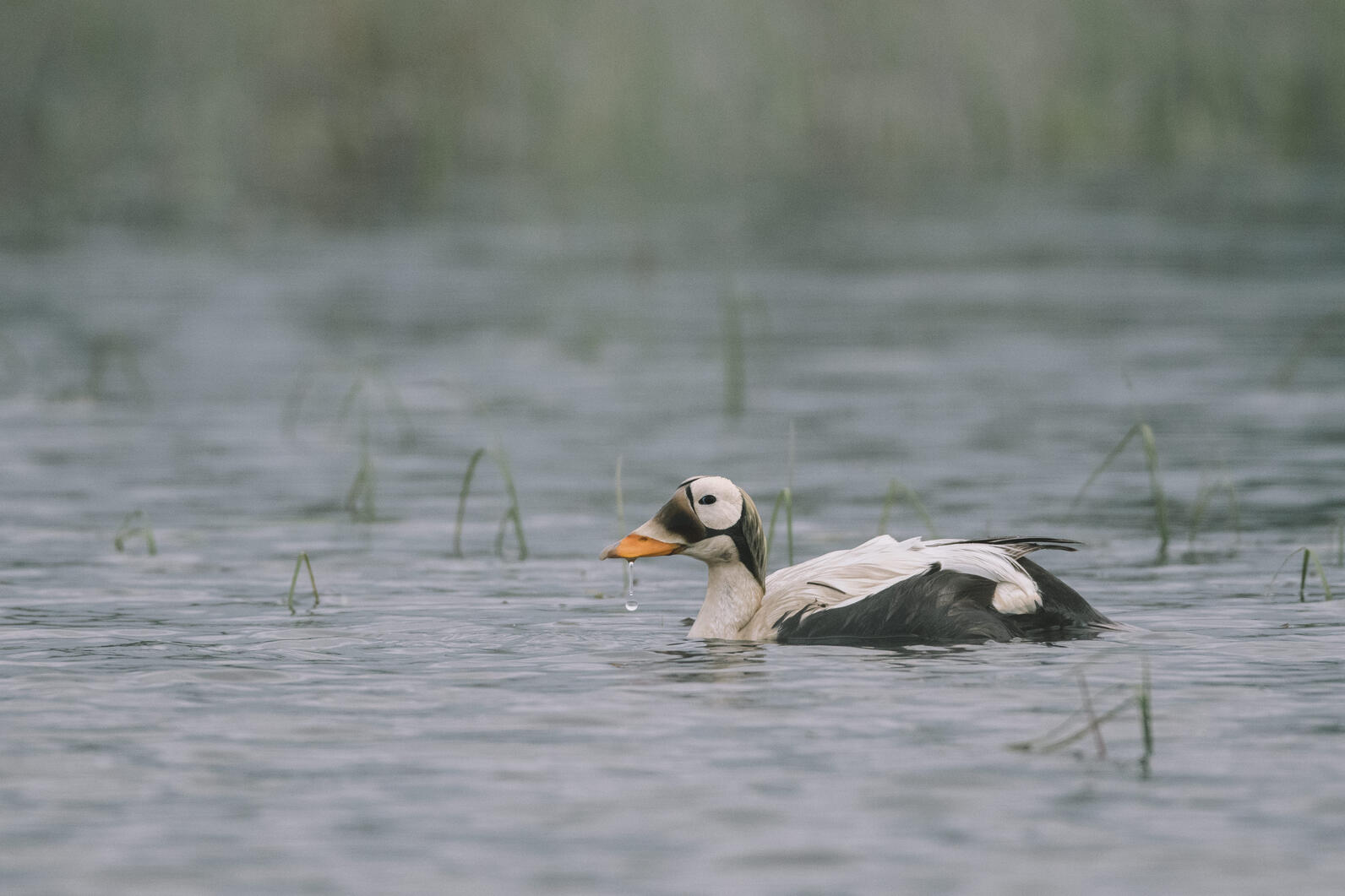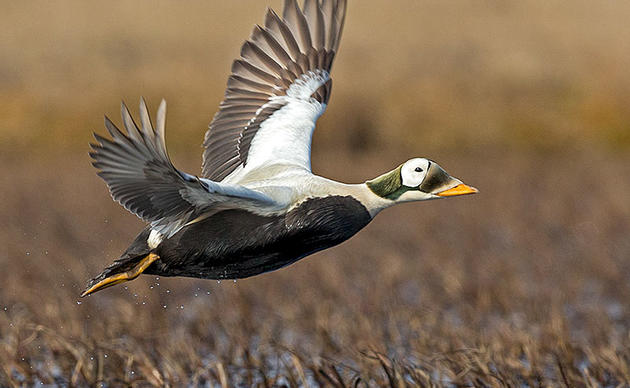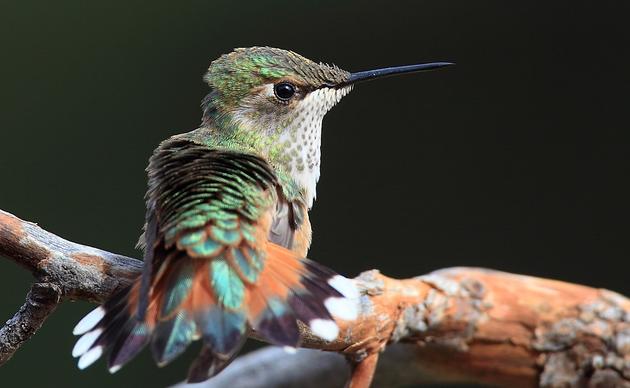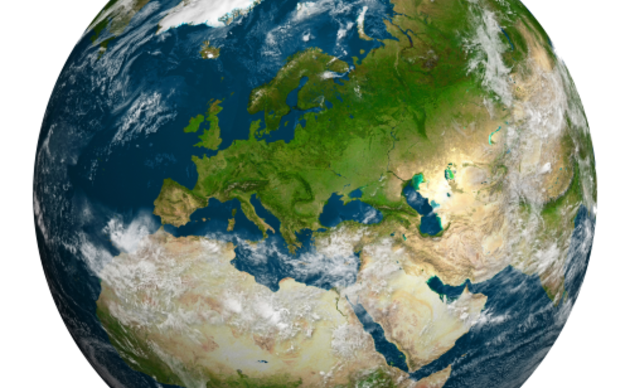America’s Arctic, Alaska Native communities, the largest national forest in the country, millions of acres of public lands—all this and much more make Alaska an invaluable place for birds, wildlife, and people.
The summer of 2024 has seen a lot of movement and wins in this space with multiple decisions coming down from the Biden administration. Here’s a recap of Alaska’s busy summer (so far).
Alaska’s D-1 Public Lands
On June 28, the Bureau of Land Management (BLM) took a big step toward finalizing protections for 28 million acres of Alaska's public lands—known as D-1 lands as they were withdrawn from mineral entry under Sec. 17(d)(1) of the Alaska Native Claims Settlement Act (ANCSA) in 1971. This summer saw a short comment period where the public had 30 days to tell federal land managers to do just that. (That was a follow-up to the 60-day comment period from December 15, 2023, to February 14, 2024, during which Audubon generated 32,158 comments urging the BLM to keep Alaska’s D-1 protected lands intact.)
This being Alaska, these lands are home to muskox, Dall sheep, all five species of Pacific salmon, brown bears, caribou, and more. We’re also talking about countless migratory birds and iconic Alaska species like the Bald Eagle and Spectacled Eider. D-1 lands also play an important role in bird and caribou migration as large tracts of public land provide essential habitat corridors along migration routes. D-1 lands are also natural climate solutions and are the traditional, and essential, hunting and fishing grounds for more than 100 Alaska Native communities. Plus, long-standing protections for Alaska public lands also support fishing and hunting opportunities and boost local economies. Recreation on BLM lands generated $53.6 million in 2021 alone. Maintaining protections for these lands is essential to grow and maintain this important industry.
Finally, on August 27, 2024, the Department of Interior finalized protections for those 28 million acres of D-1 lands across Alaska.
“These places represent some of the nation’s largest remaining intact ecosystems, from high alpine tundra to the pristine estuaries and wetlands in places like Bristol Bay, home to the world’s most abundant wild sockeye salmon runs,” said Emily Anderson, Alaska Director at the Wild Salmon Center, in a press release. “With today’s announcement, the Secretary of Interior and the Bureau of Land Management are demonstrating their commitment to maintaining our nation’s biodiversity, climate refugia, and to listening to the communities most impacted by this decision.”
Learn more about Alaska’s D-1 Lands and how we got here in “OK, Alaska, What Are D-1 Lands?”

The Brooks Range and Ambler Road
On June 28, the Biden administration released the Final Supplemental Impact Statement (FSEIS) Record of Decision (ROD) for the proposed Ambler Road. In this document, they finalized their work in the Environmental Impact Statement and selected a “No Action Alternative.” This effectively denied the permit and demonstrates that both President Biden and Secretary of the Interior Deb Haaland listened to Indigenous voices and people across the country who spoke up in support of the Brooks Range. More than 135,000 Americans—dozens of communities, nonprofits, and companies, more than 82% testimony at hearings in Alaska, and 88 individual Tribal governments across the region—supported this in the recent comment period (during which Audubon generated 34,990 comments urging the BLM to prevent the construction of Ambler Road by choosing the No Action Alternative in its Supplemental Environmental Impact Statement).
“The announcement is consequential and demonstrates that the Biden administration follows Western science and Traditional Ecological Knowledge to make informed decisions about truly irreplaceable places. The wild and fully intact ecosystem of the proposed Ambler Road corridor is of both local and hemispheric importance as the lands and waters of this region support important subsistence resources like the Western Arctic Caribou Herd and nesting habitat for birds that migrate to distant places like Peru and Colombia,” says David Krause, Vice President for the Alaska program of National Audubon Society. “The cumulative effects of roads and mining are enormous. The proposed Ambler Road would have fundamentally compromised the ecological and cultural values of the region.”
The Ambler Access Project would have been a private, industrial corridor that would connect Dalton Highway to multiple planned open-pit copper mines. It would cut through Native corporation, BLM, and state lands, plus 26 miles of the Gates of the Arctic National Park. This part of Alaska—the Brooks Range, Gates of the Arctic National Park, and the surrounding region—is home to the Western Arctic Caribou Herd and the Kobuk and Koyukuk river fisheries. These are two critical food sources for the surrounding Indigenous and rural communities. The way of life for 66 Alaska Native villages would have been directly impacted by the road and upstream open-pit mining activities.
However, there has still been opposition this summer. Alaska Senator Dan Sullivan introduced the proposed Ambler road as an official rider to the National Defense Authorization Act in the Senate. For more information on that, please read the piece penned by Clarence Putyuk Wood-Griepentrog: "OPINION: Disappointed in Sullivan pushing Ambler Road." Stay tuned for more on this.
Also this summer, the U.S. Army Corps of Engineers has officially suspended the Clean Water Act 404 permit for the proposed Ambler road, suspending a previously issued permit that would have allowed the destruction of over 1,400 acres of wetlands. Conservation groups are hopeful the Army Corps not only suspend but ultimately revoke the permit entirely.
If you’d like to thank the Biden administration for formally releasing the Record of Decision, which finalizes the selection of the “No Action Alternative” in the proposed road’s permit process, use this portal from Defend the Brooks Range. Learn more about the Brooks Range and how we got here in “The Eight Ws of Ambler Road.”

Special Areas and the Western Arctic
The Biden administration took another significant leap forward on climate, conservation, and the protection of sacred land this year by announcing new protections for more than 13 million acres of America’s Western Arctic. These new protections will safeguard subsistence hunting traditions crucial to Alaska Natives in the National Petroleum Reserve–Alaska, the nation’s largest tract of public land. This region is home to polar bears, wolves, moose, one of the largest caribou herds in the world, and birds traveling from all seven continents and dispersing along all four major North American flyways.
“This announcement by the Biden administration is another opportunity towards advancing protections on ancestral lands for our communities in the Arctic. These steady and incremental steps towards protecting lands, water, wildlife, and traditional ways of life are creating a path towards more empowered community involvement. This is vital for balancing the systematic disempowerment that’s happened in our region for decades. Many forget how recent these massive shifts have happened. In my Aaka’s (Grandmother’s) lifetime, she witnessed the transition from living a traditional lifestyle to experiencing the Trans-Alaska Pipeline System being constructed and oil fields erected close enough to her traditional lands to be seen, heard, and lead to evacuations for Nuiqsut (the most impacted village from oil and gas development on the north slope of Alaska) as recently as 2022. We welcome this most recent announcement, and will continue to work towards building stronger communities in ways that lead to autonomy and self-determination on our traditional lands,” said Nauri Simmonds, Sovereign Iñupiat for a Living Arctic in a press release.
For a quick recap, the Department of the Interior under the Biden administration completed this new rule strengthening protections for Special Areas—or areas with significant subsistence, wildlife, recreational, historic, or scenic value—on April 19, 2024. (This was an action following a 90-day public process during which Audubon generated 19,675 comments urging the agency to ensure the strongest protections possible for these invaluable regions of the Western Arctic.)
“The lands and waters of Alaska’s Western Arctic support some of the most important avian habitat on the planet and is culturally irreplaceable for numerous communities across northern and western Alaska," says Krause. “But as the Arctic undergoes dramatic climatic changes, durable protections of these intact and functional ecosystems have become essential for habitat and species adaptation, and the continuation of cultural resources and practices throughout the region. This new rule is both celebrated and absolutely necessary to protect birds, caribou, fish, and Alaskan communities.”
This summer, the BLM is seeking public input on how to update protections for the existing five Special Areas and create new Special Areas (until September 16, 2024). Through this process, the public will be able to weigh in on where and why new specific lands deserve to be protected as Special Areas.
Arctic wildlife need large, undisturbed areas to thrive. Throughout the Western Arctic, some areas are home to essential, irreplaceable wildlife that are critical to the subsistence lifestyle of 40 Alaska Native communities in the region who live a subsistence lifestyle in harmony with America’s largest caribou herd. For example, the lands in and around the Teshekpuk Lake Special Area (one of the most important areas for waterbird nesting, molting, and migration anywhere in the Circumpolar Arctic) and Colville River Special Area are key caribou habitat and critical subsistence hunting and gathering area for the village of Nuiqsut, the closest community to existing oil and gas development. The Biden administration has the opportunity to strengthen protections for these critical lands in the Western Arctic and limit development.
To learn more about the Western Arctic, and how Audubon Alaska staff helped to protect its Special Areas, see “What’s So Special About Alaska’s Special Areas?”

The Tongass National Forest
This summer, the U.S. Forest Service took the next step in advancing President Biden’s Earth Day 2022-issued Executive Order No. 14072 which committed the U.S. to identify, inventory, and protect mature and old-growth forests on federal lands.
On December 19, 2023, the Forest Service proposed a nationwide amendment to all 128 forest plans to restrict logging of old-growth forests and begin guiding stewardship of future old-growth forests, otherwise known as the National Old Growth Amendment (NOGA). The Draft Environmental Impact Statement (DEIS) for this proposal was released on June 21, 2024, and launched a public comment opportunity that will run through September 20, 2024.
In Alaska, all this movement applies greatly to the Tongass National Forest—home of the Tlingit, Haida, and Tsimshian peoples and approximately 350 species of birds. Mature and old-growth forests store huge amounts of carbon, keeping it out of the atmosphere, and the Tongass, the country’s largest forest carbon sink, holds approximately 20% of all carbon stored in the United States National Forest system.
“The Tongass represents the only public lands left in the United States, if not the world, that still has intact watersheds, which include temperate old-growth rainforest, representing the entire diversity of old-growth, from scrub old-growth to subalpine high elevation old-growth to the big floodplain forests that have become so rare in the world,” says Dr. John Schoen, a retired wildlife ecologist who spent 14 years as the senior scientist for Audubon Alaska and authored Tongass Odyssey: Seeing the Forest Ecosystem through the Politics of Trees. “And these intact watersheds still have all their ecological parts, including salmon, black and brown bear, wolves, Marbled Murrelets, goshawks, a variety of forest songbirds—the Tongass is a complete ecosystem.”
The good thing is the Tongass is no longer exempted from NOGA under the Southeast Alaska Sustainability Strategy (SASS), which was not a durable, enforceable rule, and did not go far enough to permanently shift the Tongass away from logging.
However, the Forest Service’s proposal does fall a bit short of achieving critical safeguards for mature and old-growth forests. For example, the four proposed alternatives for a final Record of Decision contain ambiguous language that could be used to justify continued commercial logging of old-growth in the Tongass. Line officers appear to have the discretion to modify NOGA protections in individual forest plans through the forest plan amendment or revision process.
Learn more about the Tongass National Forest, NOGA, and how you can add your voice by reading “The Tongass and the Era of Old-Growth Protections.”







